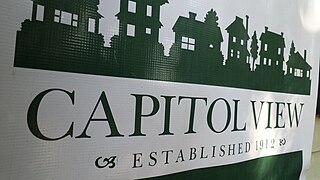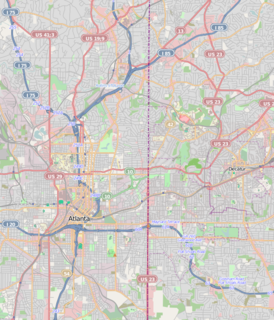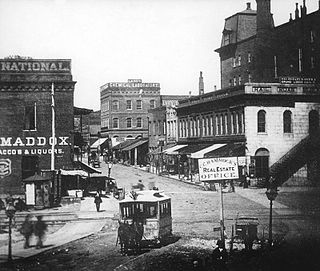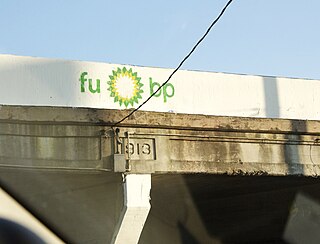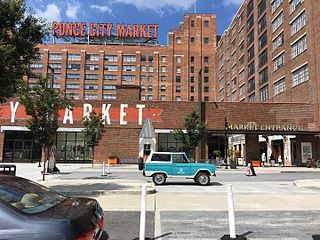Hulsey Yard is a rail yard of the CSX railroad, stretching approximately 0.9 miles (1.4 km) along the border of the Old Fourth Ward, Inman Park, Cabbagetown and Reynoldstown neighborhoods of Atlanta. The south wall of the rail yard along Wylie Street in Reynoldstown is one of the most prominent locations for street art in Atlanta. The art is managed by the Wallkeepers Committee of the Cabbagetown Neighborhood Improvement Association, [1]

A rail yard, railway yard or railroad yard is a complex series of railroad tracks for storing, sorting, or loading and unloading, railroad cars and locomotives. Railroad yards have many tracks in parallel for keeping rolling stock stored off the mainline, so that they do not obstruct the flow of traffic. Railroad cars are moved around by specially designed yard switchers, a type of locomotive. Cars in a railroad yard may be sorted by numerous categories, including railroad company, loaded or unloaded, destination, car type, or whether they need repairs. Railroad yards are normally built where there is a need to store cars while they are not being loaded or unloaded, or are waiting to be assembled into trains. Large yards may have a tower to control operations.

CSX Transportation is a Class I railroad operating in the eastern United States and the Canadian provinces of Ontario and Quebec. The railroad operates approximately 21,000 route miles (34,000 km) of track. The company operates as a subsidiary of CSX Corporation, a Fortune 500 company headquartered in Jacksonville, Florida.

The Old Fourth Ward, often abbreviated O4W, is an intown neighborhood on the eastside of Atlanta, Georgia, United States. The neighborhood is best known as the location of the Martin Luther King, Jr. historic site.
Hulsey Yard was originally part of the Georgia Railroad and Banking Company.
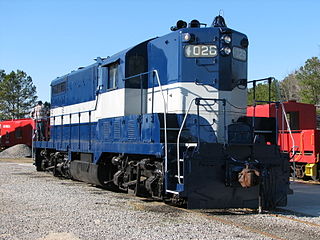
The Georgia Railroad and Banking Company also seen as "GARR", was a historic railroad and banking company that operated in the U.S. state of Georgia. In 1967 it reported 833 million revenue-ton-miles of freight and 3 million passenger-miles; at the end of the year it operated 331 miles (533 km) of road and 510 miles (820 km) of track.
MARTA's Blue Line and Green Line traverses the rail yard.

The Metropolitan Atlanta Rapid Transit Authority is the principal public transport operator in the Atlanta metropolitan area. Formed in 1971 as strictly a bus system, MARTA operates a network of bus routes linked to a rapid transit system consisting of 48 miles (77 km) of rail track with 38 train stations. It is the eighth-largest rapid transit system in the United States by ridership.
The Blue Line is a rapid transit line in the MARTA rail system. It operates between Hamilton E. Holmes and Indian Creek stations, running through Atlanta, Decatur and portions of unincorporated DeKalb County.
The yard is a key node on the BeltLine trail, whose northeast section terminates across Decatur Street/DeKalb Avenue from the west end of the yard, and whose southeast section terminates at the east end of the yard, and poses as issue as to how to connect the two sections of the trail across the yard. [2] [3]
The BeltLine is a former railway corridor around the core of Atlanta, Georgia, under development in stages as a multi-use trail. Some portions are already complete, while others are still in a rough state but hikeable. Using existing rail track easements, the BeltLine is designed to improve transportation, add green space, and promote redevelopment. There are longer-term visions for streetcar or light-rail lines along all or part of the corridor.

Decatur Street is one of the original 7 streets of Atlanta, Georgia; it was also a famous entertainment area from the 1850s through the early 20th century.
The BeltLine and other local organizations also use the designation Hulsey Yard name to designate a natural habitat on the subcontinental divide, and an associated "arboretum" or nature walk that it promotes in the area. [4]





